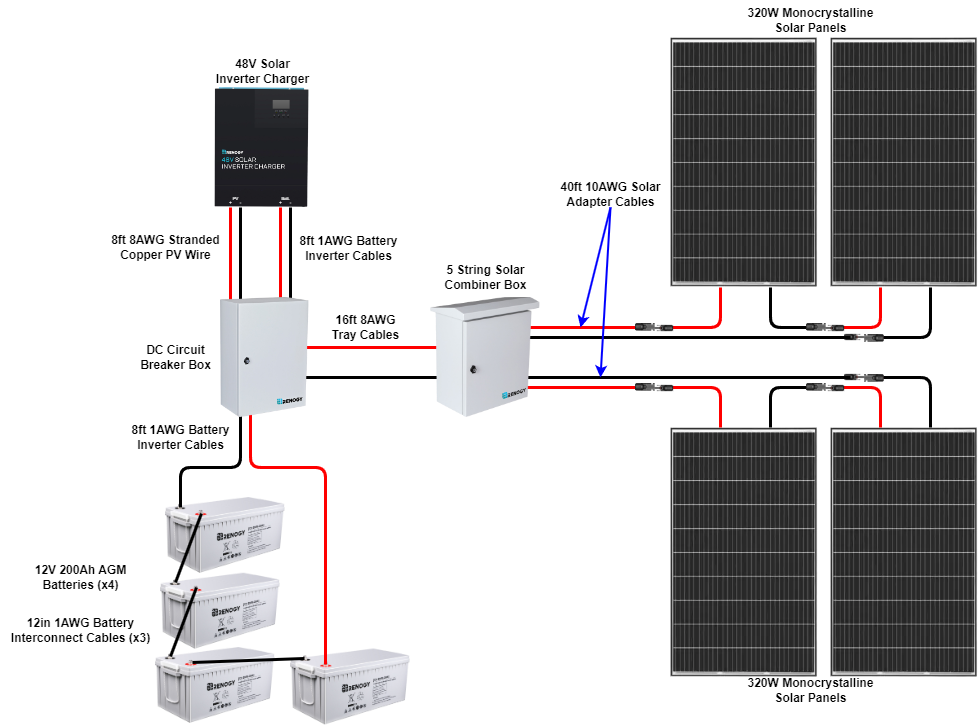KEY FEATURES
Over 10 million solar panels sold












Package Includes
Maximum Power at STC: 320W
Optimum Operating Voltage (Vmp): 32.7V
Open-Circuit Voltage (Voc): 40.1V
Optimum Operating Current (Imp): 9.79A
Short-Circuit Current (Isc): 10.36A
Operating Temperature: -40°F to 185°F
Cell Efficiency: 21%
Maximum System Voltage: 1000V DC (UL)
Maximum Series Fuse Rating: 15A
Weight: 39.7lbs
Dimensions: 65.6 x 39.4 x 1.4 in
Certifications: CE, ISO, UL
Output Waveform: Pure Sine Wave
Continuous Output Power: 3500W
Peak Power Rating: 7000W
Output Voltage: 120VAC±5%
Output Frequency: 50 Hz ± 0.3% 60 Hz± 0.3%
Input Voltage / Rated Battery Voltage: 48VDC (minimum start-up voltage 44V)
Charge Controller Type: MPPT
Maximum Input Power: 4800W
Maximum Input Current: 50A
Dimensions: 16.8*12.7*4.9 in / 426*322*124 mm
Weight: 23.8 lbs /10.8kg
opc:
Battery Type: AGM
Rated Capacity: 200Ah (20 Hour Rate to 10.5V)
Nominal Voltage: 12V
Internal Resistance: Approx. 3.5mΩ
Connection Method: In Series, and In Parallel (up to 4)
Dimensions: 20.6 x 9.4 x 8.8 in / 522 x 240 x 224 mm
Weight: 127.9 lbs / 58 kg
Standard Operation Temperature: 77°F±9°F(25°C±5°C)
Panels: 25-year power output warranty: 5 year 95% output warranty, 10 year 90% output warranty, 25 year 80% output warranty 10-year material and workmanship warranty
Accessories: 1-year material and workmanship warranty
Warranty Information
| Panels |
25-year power output warranty: 5 year 95% output warranty, 10 year 90% output warranty, 25 year 80% output warranty 5-year material and workmanship warranty |
| Accessories | 1-year material and workmanship warranty |
FAQ
1. How many solar panels and batteries do I need to run an AC?
The number of solar panels and batteries needed to power your AC unit depends on the AC unit’s power consumption, and typical duration of usage. To run a 12000BTU mini-split AC unit (which is commonly used in tiny homes) for several hours per day, we recommend between 1000 and 2000 watts of solar, and between 4 and 8 kilowatt-hours.

































